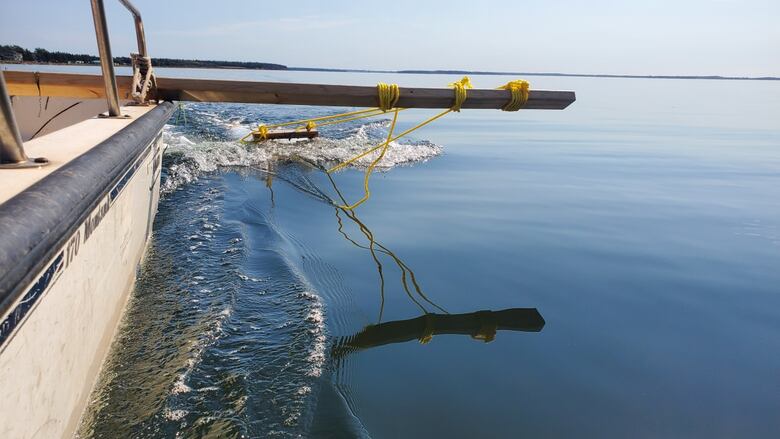What's in your water? P.E.I. microplastics researchers hope to find out
Sand and seawater samples being collected in Bedeque and Tracadie bays

Two watershed groups on P.E.I. are participating in a regional research project to determine the level of microplastics in Island waterways.
Microplastics are tiny plastic particles — often invisible to the human eye — created as waste and plastic products break down.
The Winter River-Tracadie Bay Watershed Association and the Bedeque Bay Environmental Management Association are collecting data to determine microplastic levels in their respective bays for the second summer.
"We are expecting a lot of Styrofoam," said Sarah Wheatley, coordinator of the Tracadie-area watershed group.
The samples are sent to a lab at the University of New Brunswick to be counted and classified, she said. Categories might include threads or microfibres from plastic fleece or coated fabrics, or microbeads from cosmetic products such as facial scrubs.
The watershed researchers have not yet received the results from last year's collection, but Wheatley said it's inevitable that plastics are present in the Tracadie Bay.
"Basically, everywhere that people do microplastic analysis, they find some level of microplastics. It's just a question of how high the levels are in different areas," she said.
Regional research, local results
The watersheds are collecting the water samples using a homemade trawler that was developed at Memorial University's Civic Laboratory for Environmental Action Research.

The device is attached to a boat and then dragged through the water in the various collection sites for a set amount of time. A filter on the device traps the microplastics, which are then jarred and sent to New Brunswick.
The researchers are also collecting samples from Island sand.
The project is federally funded and led by Coastal Action, a non-profit research institute in Mahone Bay, N.S., as part of a larger study on microplastics.
Tracadie is set for a few more days of collection this season, while David Allan with the Bedeque-area group said they have wrapped up work for the season.
"It's a way of identifying where our microplastics are coming from so we can look at ways to reduce the microplastics in our watersheds as well," Allan said.
In contrast with Tracadie — where the watershed group says it expects much of the plastics to come from the aquaculture industry — Bedeque's watershed group thinks much of the plastics can be sourced back to the city of Summerside.
"Sometimes they'll be discharged from the sewage plant or something that might leach…. We're wondering if we're going to collect that," Allan said.
"Even the laundry pods and stuff like that, that all can get into your water systems as well, or even just run off from the streets or whatever. Anything can be collected."

And while microplastics have been found nearly everywhere — from untouched mountain ranges to human blood — Allan said scientists don't have all the answers about how each local ecosystem will be affected.
"That's going to be in the fish…. People are going to eat the fish, so it's going to be in the in people as well. It's found in people quite commonly," he said.
"It's going to have ill health effects on people as well as the ecosystem."

As part of the broader research in the region, Krista Beardy, a microplastics researcher at UNB, will also be collecting blue mussels to analyze them for evidence of microplastics, since the bivalve molluscs are filter feeders.
The Bedeque watershed said it hopes to use the eventual results to educate the public about the presence and dangers of microplastics, while Tracadie will use its results to approach the aquaculture industry.
"When you see people in Toronto or something doing shoreline cleanups, [the trash is] from all the people on the beach. But in an area like Tracadie Bay, where there's a lot of industry, then it's more industrial waste like Styrofoam buoys and bits of netting," said Wheatley.
"So we're going to use that information to reach out to that industry a bit more."

